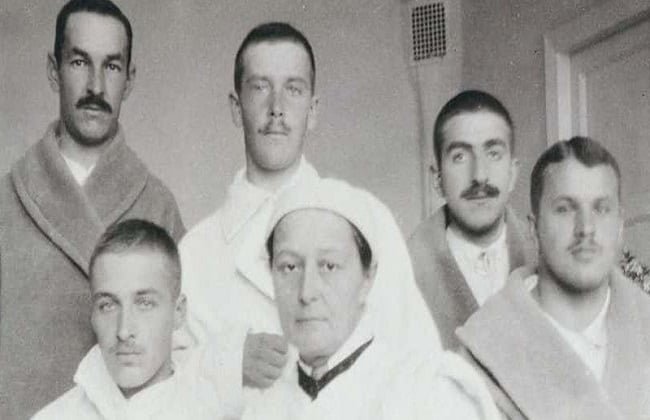Table of Contents
Introduction:
A degloved face injury is a severe medical condition that can have devastating consequences for the affected individual. We at Engineeringhulk, aim to provide comprehensive information about degloved face injuries, including their causes, treatment options, and prevention strategies.
A degloved face occurs when the skin, soft tissues, and sometimes even the underlying bones are forcibly separated from the underlying facial structures due to extreme trauma or accidents. This type of injury is commonly seen in high-speed motor vehicle accidents, industrial mishaps, and sports-related accidents. The term “degloved” refers to the similarity to a glove being pulled off, leaving the hand bare and exposed.
Causes:
1. Motor Vehicle Accidents: Collisions at high speeds, especially with minimal vehicle safety features, can lead to severe facial trauma, resulting in degloved face injuries.
2. Workplace Accidents: Industrial accidents involving heavy machinery and equipment can cause degloving injuries to workers in various industries.
3. Sports Injuries: Impact sports, such as football or motor racing, can lead to facial injuries that result in degloving.
4. Falls: A severe fall from a significant height or down the stairs can also cause this type of facial injury.
Treatment Options:
Immediate medical attention is critical for individuals with degloved face injuries to ensure the best possible outcome. Treatment often involves a multi-disciplinary approach, including:
1. Emergency Stabilization: The first step is to stabilize the patient’s condition, control bleeding, and manage any potentially life-threatening injuries.
2. Surgical Intervention: Surgery is usually required to reattach the degloved skin and soft tissues back to the facial structures. In some cases, facial reconstructive surgery may also be necessary to repair bones or reconstruct damaged facial features.
3. Wound Care: After surgery, meticulous wound care is essential to prevent infection and promote healing.
4. Physical Therapy: Rehabilitation and physical therapy may be necessary to regain facial function and improve cosmetic outcomes.

Prevention Strategies:
Preventing degloved face injuries primarily involves adopting safety measures and practices, especially in high-risk environments:
1. Wear Proper Safety Equipment: Whether working in industrial settings or participating in sports, using appropriate safety gear can significantly reduce the risk of facial injuries.
2. Follow Road Safety Rules: Adhering to traffic rules, wearing seat belts, and using appropriate child safety seats can reduce the likelihood of severe facial injuries in motor vehicle accidents.
3. Implement Workplace Safety Protocols: Employers should enforce strict safety protocols and provide adequate training to workers operating heavy machinery or working in hazardous environments.
Degloved face injuries are severe and potentially life-altering. Understanding the causes, treatment options, and prevention strategies is essential for raising awareness and promoting safety. By following safety guidelines, wearing protective equipment, and being cautious in high-risk situations, we can reduce the incidence of degloved face injuries and protect ourselves and others from this devastating condition.
If you or anyone you know experiences such an injury, seek immediate medical attention to maximize chances of recovery and functional restoration. Remember, prevention is always better than cure.
| Parameter | Description |
|---|---|
| Type of Injury | Degloved face, characterized by a separation of the skin and soft tissues from the underlying facial structures. |
| Causes | – Motor vehicle accidents – Industrial accidents – Animal attack – Severe physical assaults |
| Clinical Presentation | – Exposed bone or deep facial structures – Absence or hanging of large parts of the facial skin |
| Associated Injuries | – Traumatic brain injury – Orbital injuries – Fractures of facial bones – Dental trauma |
| Immediate Interventions | – Secure airway – Control bleeding – Cover exposed tissues with moist sterile dressings – Administer pain control and tetanus prophylaxis if needed |
| Diagnostic Imaging | – CT scan of the face and neck to evaluate bone injuries and soft tissue damage – MRI in select cases |
| Complications | – Infection – Scarring – Functional loss (e.g., impaired vision, difficulty swallowing) – Cosmetic deformities – Neurologic deficits (e.g., facial nerve injury) |
| Surgical Interventions | – Reattachment of the avulsed tissue – Debridement of non-viable tissue – Facial reconstruction – Skin grafting or flaps as required |
| Postoperative Care | – Antibiotics to prevent infection – Pain management – Regular wound dressing and care – Physical and occupational therapy as required |
| Rehabilitation and Recovery | – Scar massage and management – Facial exercises – Emotional and psychological support |
Types of Degloving:
A degloving injury is a serious type of injury that occurs when the skin and underlying tissues are separated from the underlying structures, such as bones and muscles. This separation typically happens due to a traumatic force or accident that pulls the skin away from the deeper tissues. There are three main types of degloving injuries:
1. Open Degloving: In an open degloving injury, the skin is completely torn away from the underlying tissues, exposing the muscles, bones, and other structures. This type of degloving injury is usually associated with high-energy trauma, such as motor vehicle accidents or industrial accidents.
2. Closed Degloving: A closed degloving injury, also known as a “closed degloving without skin breach,” occurs when the skin and underlying tissues separate without an open wound. The skin may appear normal, but there is a significant separation between the layers underneath. Closed degloving injuries can also be caused by high-impact accidents or crushing injuries.
3. Mangled Extremity with Degloving: This type of degloving injury involves a combination of severe soft tissue damage, including degloving, and significant damage to the bones and blood vessels in an extremity (e.g., arms or legs). Mangled extremities with degloving injuries often result from severe trauma, such as heavy machinery accidents or explosions.
Also, read about Trixie’s Tongue Tricks
































Comments on “Degloved Face: Causes, Treatment, and Prevention”
Comments are closed.